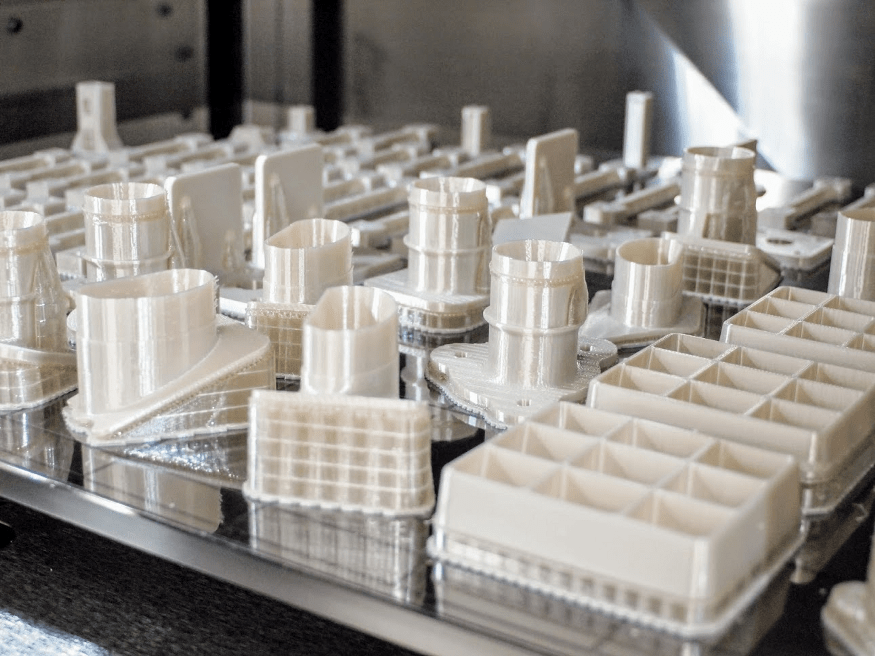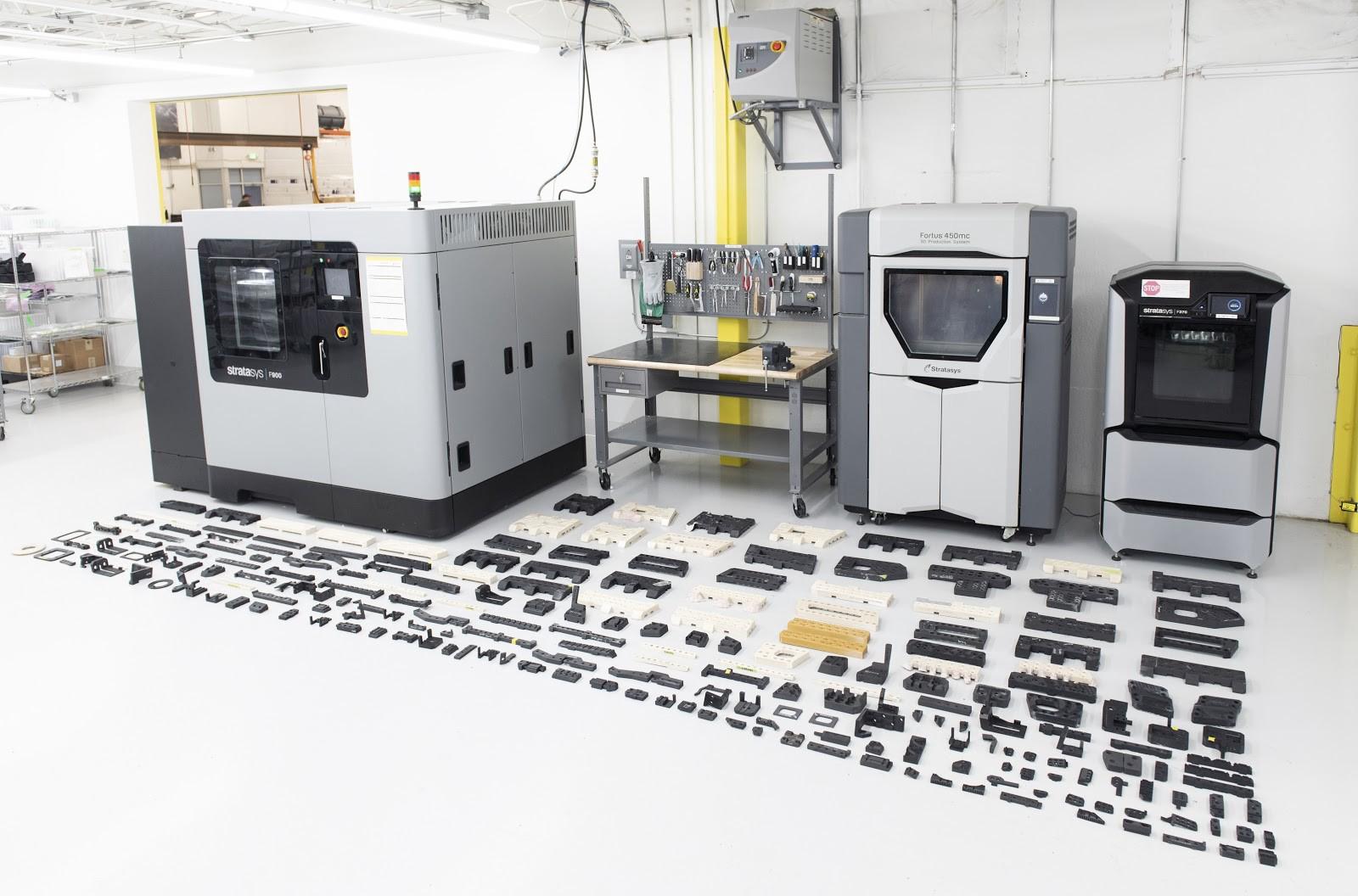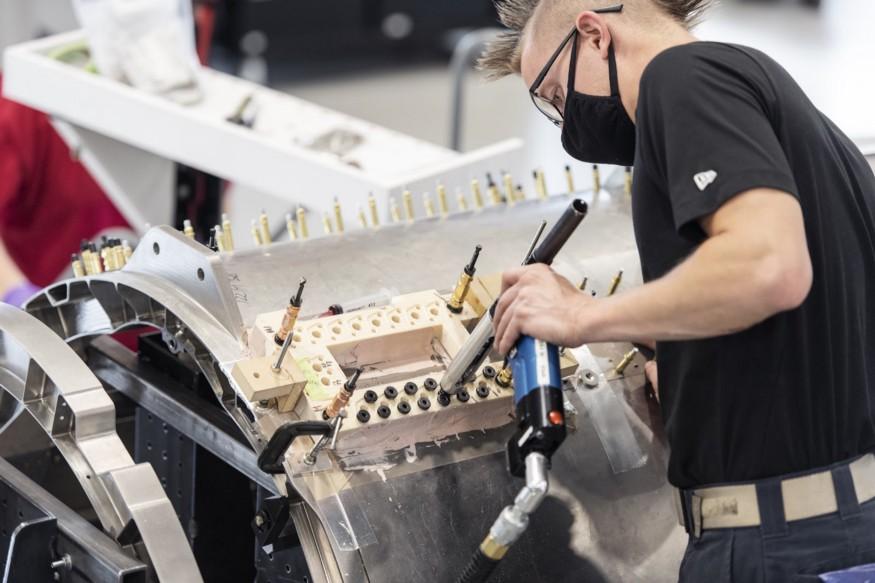Customer Profile
Supersonic air travel isn’t new, but imagine having readily commercial supersonic flights since the Concorde retired in 2003, and this is where you have to be agile and think big.
Technology advancements in 3D printing have transformed how we design and manufacture aircraft, and this is exactly what Boom Supersonic has done with their goal of creating the world’s fastest airliner.
Ahead of building Overture, the company’s flagship airliner, Boom embraced 3D printing in nearly every facet of their 1/3 scale supersonic demonstrator, XB-1, which was unveiled in October 2020.

Challenge
The Boom team faced significant challenges in both manufacturing efficiency and aircraft weight optimization. Traditional tooling methods required relying heavily on metrology to position one hole at a time — a slow, labor-intensive process that prolonged assembly and increased the risk of alignment errors or surface damage.
Additionally, components fabricated with conventional materials such as steel and aluminum added unnecessary weight to the aircraft, limiting performance potential. With over 340 unique parts required for the XB-1, these traditional manufacturing constraints made it difficult to balance precision, efficiency, and weight reduction.
Solution
Having previous experience with 3D printing, Mike Jagemann, the Director of XB-1 production, brought in two Stratasys 3D printers – an F370 and Fortus 450mc—right away to help with prototyping. A Stratasys F900 3D printer was later added to manufacture tooling and production parts.
“With 3D printing, we’ve been able to obtain parts very quickly and determine that they’re either going to work or that we need to make changes. Rather than spend eight hours in CAD trying to check space constraints, the engineer can continue working on other things. When the part is printed, they can check the fit.” - Mike Jagemann, Director of XB-1 production
Apart from saving time and resources during the build, the weight of the aircraft—a game-changer for all aerospace engineers—was also significantly reduced. 3D-printed parts, depending on the choice of materials, are typically lighter than their traditional counterparts fabricated with steel and aluminum. With more than 340 unique 3D-printed parts on the XB-1, the combined weight reduction made a substantial difference.

Impact
More than 800 drill blocks were printed during the XB-1 production which supported the careful assembly of the titanium fuselage along with other printed jigs, including those for the cockpit bulkhead.
Initially, Boom developed tooling that relies on metrology to position one hole at a time. It became clear however that this approach was too time-consuming. The team pivoted and 3D printed drill blocks, each incorporating multiple holes. That allowed them to use metrology to accurately position twenty or more holes instead of just one at a time, while mitigating potential damage to the aircraft.
“Without 3D printing, lead times for drill blocks would have been in the neighborhood of weeks, not to mention tens of thousands of dollars to fabricate out of aluminum. With in-house 3D printing, those same blocks took only a few days to print at a lower cost.” — Mike Jagemann, Director of XB-1 production

Competition, economic instability, and other factors in this post-COVID new normal are challenges that every business faces, but 3D printing can rise to the fore in blunting risks, reducing production costs, and accelerating manufacturing timelines to kick start recovery.
There is no better time, especially with the Singapore aerospace sector getting a $40m boost over the next 3 years.
Discover the key benefits and features of Polymer 3D Printers or choose our AM Consultancy Service to manage your entire product development process.






